Capacitors: Understanding the Essential Electronic Component
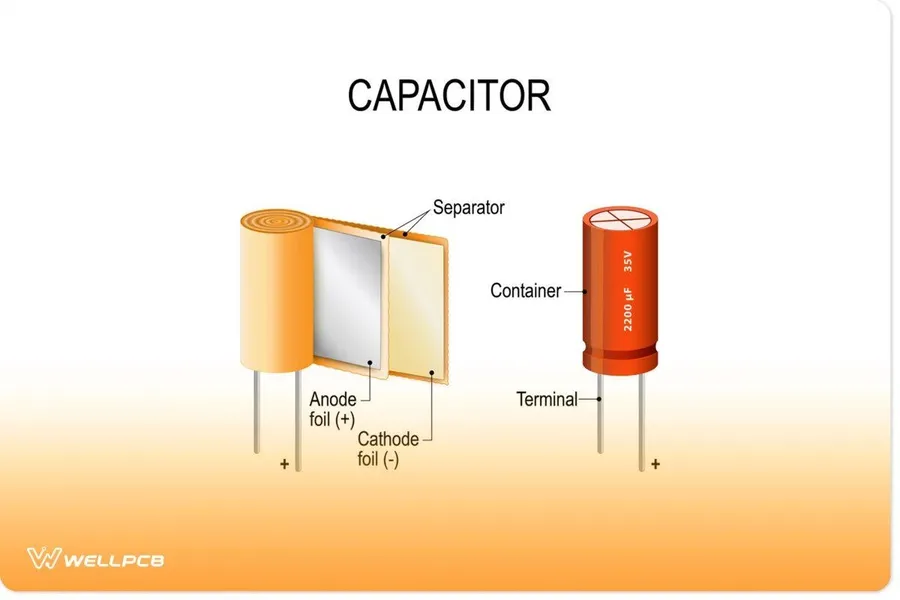
Capacitors, fundamental building blocks of modern electronics, are everywhere, from smartphones to industrial machinery. These seemingly simple devices, made with dielectric material between two conductive plates, play a crucial role in storing and releasing electrical energy. Like tiny reservoirs, they manage electrical flow in countless ways, impacting our daily lives and the functioning of countless devices, this article dives deep into the world of capacitors, exploring their workings, types, applications, and crucial role in the world of modern electronics.
What is a Capacitor?

A capacitor is a fundamental electronic component designed to store electrical energy electrostatically within an electric field, achieved by accumulating electric charge on two conductive plates separated by a dielectric material. Unlike batteries that utilize chemical reactions to store energy, capacitors provide rapid charge and discharge capabilities, making them indispensable in various electronic applications.
Fundamentally, a capacitor consists of two conductive plates, typically made of metal, separated by an insulating material called a dielectric. When a voltage is applied across these plates, electrical charge accumulates on them, creating an electric field within the dielectric. The amount of charge a capacitor can store is directly related to its capacitance, which is determined by the physical characteristics of the device—namely, the area of the plates, the distance between them, and the type of dielectric material used.
How Capacitors Store Energy
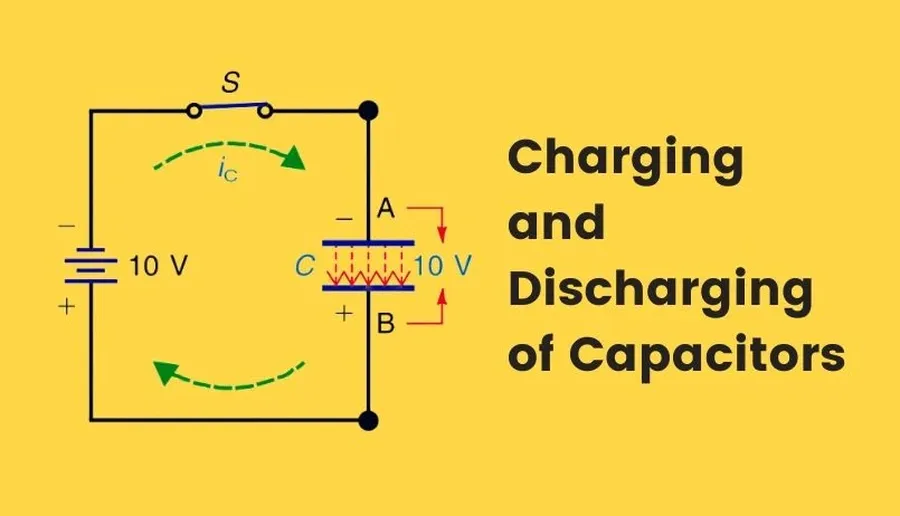
Capacitors store electrical energy through the accumulation of charge on conductive plates separated by a dielectric material. This process is driven by an applied voltage, which creates an electric field within the dielectric. The energy is stored within this electric field, contrasting with batteries which store energy via chemical reactions.
When a voltage source is connected across the capacitor, electrons flow from the source to one plate, while an equal number of electrons are withdrawn from the other plate. This charge separation establishes an electric field in the dielectric between the plates. The strength of the electric field and the amount of charge stored depend on the capacitance and applied voltage.
The key distinction from batteries lies in the method of energy storage. Capacitors store energy electrostatically within the electric field, allowing for rapid charging and discharging, whereas batteries rely on chemical reactions that result in slower energy transfer rates. The stored energy remains until the electrical potential is removed or a path for discharge is provided, at which point the charges will flow back and the stored energy is released.
Capacitance: The Measure of Energy Storage
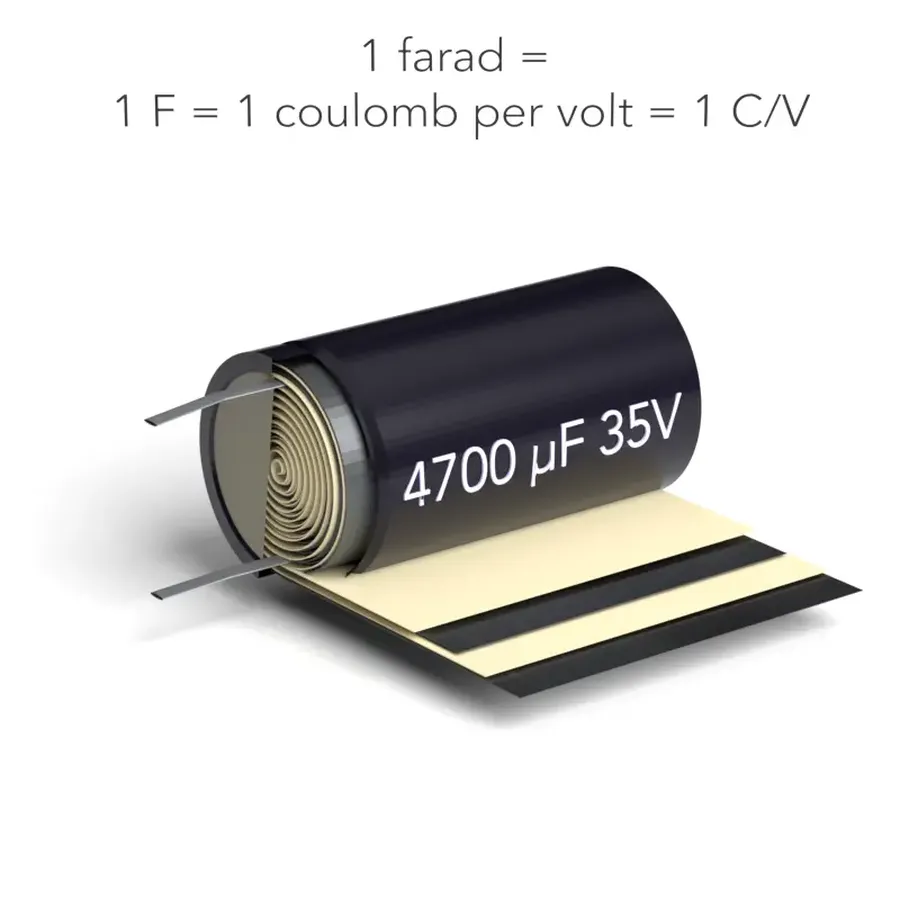
Capacitance is the fundamental property that defines a capacitor's ability to store electrical charge, quantified in Farads (F). A higher capacitance value signifies a greater capability for storing energy within an electric field created by the capacitor's structure.
The Farad (F), while the standard unit, often results in impractical values for common applications. Therefore, sub-units such as microfarads (µF), nanofarads (nF), and picofarads (pF) are more frequently encountered in practical scenarios. These sub-units simplify the expression of capacitance values for components used in electronics.
| Unit | Symbol | Value in Farads |
|---|---|---|
| Farad | F | 1 F |
| Microfarad | µF | 10^-6 F |
| Nanofarad | nF | 10^-9 F |
| Picofarad | pF | 10^-12 F |
Types of Capacitors: A Detailed Overview
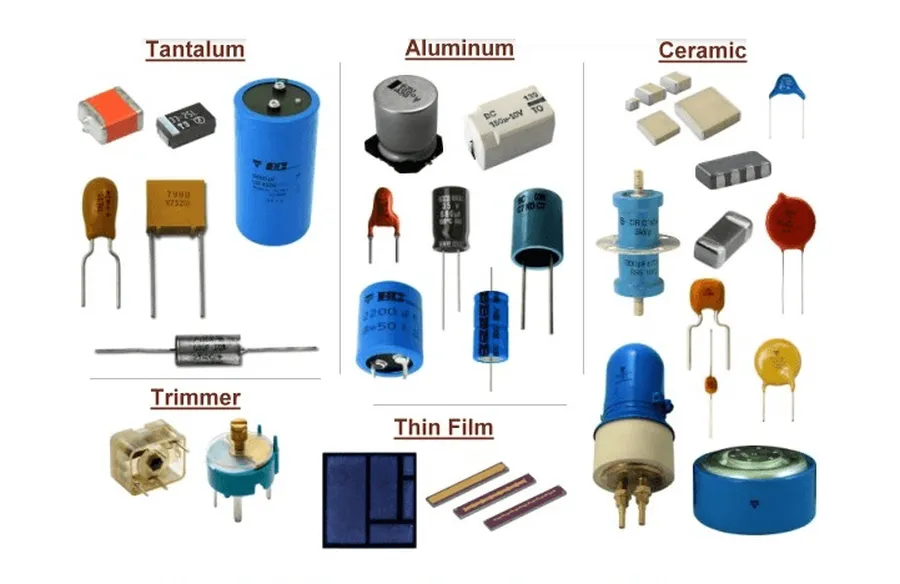
Capacitors are not monolithic; they exist in various types, each tailored for specific applications based on their unique characteristics. These variations stem from differences in dielectric materials and construction techniques, leading to diverse performance attributes. Understanding these differences is crucial for selecting the appropriate capacitor for a given electronic circuit design.
| Capacitor Type | Dielectric Material | Typical Applications | Key Characteristics | Advantages | Disadvantages |
|---|---|---|---|---|---|
| Ceramic Capacitors | Ceramic (e.g., barium titanate) | High-frequency circuits, decoupling, bypass | Small size, low cost, non-polarized | Low cost, high-frequency performance | Lower capacitance values, temperature sensitivity |
| Electrolytic Capacitors | Aluminum oxide or tantalum pentoxide with electrolyte | Power supply filtering, audio coupling | High capacitance, polarized | High capacitance values, compact size | Polarized, limited frequency response, shorter lifespan |
| Film Capacitors | Polyester, polypropylene, or other polymer films | High-precision timing circuits, audio applications | Stable performance, low loss, non-polarized | Stable over a range of conditions, low loss | Larger size, higher cost compared to ceramic |
| Tantalum Capacitors | Tantalum pentoxide | High-reliability applications, compact power supplies | High capacitance in small size, polarized | High capacitance-to-size ratio, good temperature stability | Polarized, prone to failure if overstressed, higher cost |
| Supercapacitors (Ultracapacitors) | Porous carbon, metal oxides, or conductive polymers | Energy storage for longer durations, hybrid vehicles | Very high capacitance, high energy storage | High energy storage, rapid charge/discharge | Lower voltage rating than traditional capacitors |
Capacitor Applications: Where Are They Used?
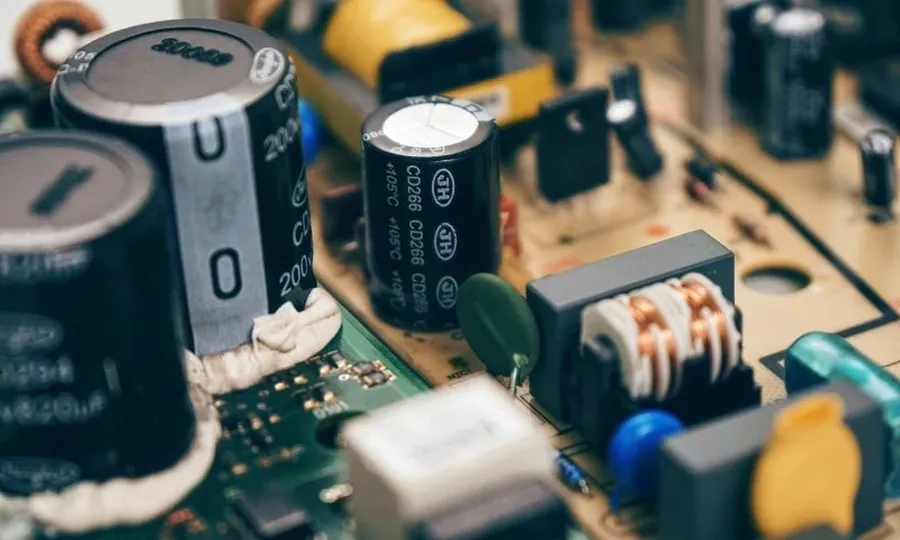
Capacitors are ubiquitous components in modern electronics, serving a multitude of essential functions across diverse applications. Their ability to store and release electrical energy rapidly makes them indispensable for a wide range of tasks, from smoothing power delivery to enabling complex signal processing.
- Power Supply Filtering
Capacitors are crucial in power supplies for smoothing out voltage fluctuations and reducing noise, thus ensuring a stable and clean power source for sensitive electronics. This is often achieved by using capacitors as bypass or decoupling components. - Signal Tuning and Filtering
In radio frequency (RF) circuits, capacitors are used in conjunction with inductors to form resonant circuits for tuning to specific frequencies. They also play a role in filtering out unwanted frequencies from signals, allowing the targeted frequency to pass. - Energy Storage
Capacitors can store electrical energy, though typically at a lower energy density compared to batteries. They are used in applications requiring a burst of energy, such as camera flashes and pulse power systems, which discharge stored energy rapidly to generate a quick high current pulse. - Power Factor Correction
In AC power systems, capacitors improve the power factor by reducing the reactive power component. This leads to better energy efficiency and minimizes losses in power distribution networks. - Timing and Oscillation Circuits
Capacitors are used in circuits to establish time delays and generate oscillating signals. They are fundamental in timer circuits, oscillators, and in the operation of microcontrollers. - Coupling and Decoupling
Capacitors are used to couple AC signals between different stages of an electronic circuit, while blocking DC signals. Similarly, they can decouple different parts of a circuit to prevent unwanted interaction. - Motor Starting
In single-phase AC motors, capacitors are utilized to provide the necessary phase shift to initiate rotation, after which some capacitors may stay in the circuit to improve the motor’s performance.
The diverse applications of capacitors stem from their fundamental ability to store and release electrical energy in a controlled manner, thus making them essential in virtually all areas of electronics, from consumer gadgets to large-scale industrial systems.
| Application | Function of Capacitor | Specific Examples |
|---|---|---|
| Power Supplies | Filtering and Smoothing | Computer power supplies, phone chargers |
| Audio Amplifiers | Coupling and Decoupling | Audio equipment, signal processing |
| RF Circuits | Tuning and Filtering | Radios, wireless communications |
| Camera Flashes | Energy Storage | Digital cameras, portable lighting devices |
| AC Motors | Phase Shifting and Motor Starting | Washing machines, refrigerators |
| Timing Circuits | Time Delay and Oscillations | Microcontrollers, digital clocks |
Capacitor Symbols and Circuit Diagrams
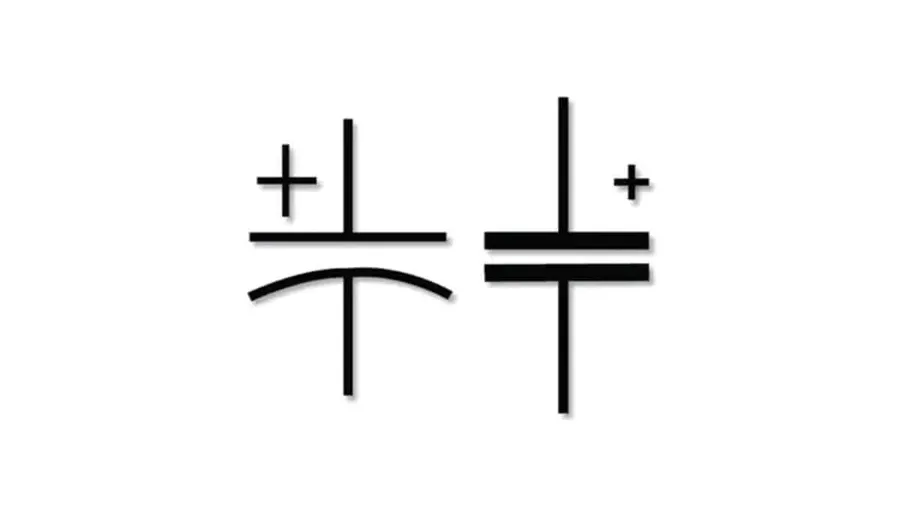
Accurate interpretation of circuit diagrams relies heavily on understanding capacitor symbols. These symbols, standardized for electronic schematics, provide vital information about the capacitor’s type and polarity, facilitating effective circuit design, analysis, and troubleshooting.
- Basic Capacitor Symbol
Represented by two parallel lines of equal length, this symbol signifies a non-polarized capacitor, indicating it can be oriented either way in a circuit. This symbol is most commonly used for ceramic, film, and other non-polarized capacitor types. - Polarized Capacitor Symbol
Distinguished by one straight line and one curved line, this symbol indicates a polarized capacitor, such as electrolytic or tantalum capacitors. The curved line denotes the negative terminal, and it's critical to observe polarity when incorporating these components into circuits. - Variable Capacitor Symbol
A capacitor symbol with an arrow through it symbolizes a variable capacitor. These components allow for adjusting the capacitance values within a circuit.
| Symbol Type | Description | Typical Capacitor Types |
|---|---|---|
| Two Parallel Lines | Non-polarized capacitor, no specific orientation required in the circuit. | Ceramic, Film |
| One Straight Line, One Curved Line | Polarized capacitor, orientation of the leads is important. | Electrolytic, Tantalum |
| Symbol with Arrow Through It | Variable Capacitor, capacitance can be changed. | Trimmer capacitors, Tuning capacitors |
Capacitor Failure and Troubleshooting
Capacitors, while generally robust, are susceptible to failure like any other electronic component. Understanding common failure modes and troubleshooting techniques is crucial for maintaining the reliable operation of electronic circuits. Identifying and addressing capacitor failures promptly can prevent system malfunctions and performance degradation.
Capacitor failures typically manifest in several ways:
- Short Circuits
A short circuit occurs when the insulation between the capacitor plates breaks down, allowing current to flow directly between them, often due to dielectric breakdown. - Open Circuits
An open circuit happens when the internal connection to the capacitor plates is broken, usually due to physical damage or solder joint failure. - Leakage
Leakage refers to an increased current flow through the dielectric material or the capacitor's seals and terminations, often occurring in electrolytic and tantalum capacitors.
Visual inspection can reveal several telltale signs of capacitor failure:
- Bulging
Electrolytic and tantalum capacitors often exhibit bulging at their top or bottom when internal pressure increases due to heat or component degradation. - Leaking
Electrolytic capacitors may leak electrolyte, leaving a visible residue around the component. - Physical Damage
Cracks, burns, or other physical damage are indicators that the component may have failed due to external factors.
Troubleshooting techniques involve both visual inspection and measurement.
- Visual Inspection
Carefully examine capacitors for the signs of failure mentioned above. - Capacitance Meters
A capacitance meter can be used to measure the capacitance value of a capacitor. A significant deviation from the rated value indicates a potential failure. - Continuity Checks
Use a multimeter to check for continuity or short circuit condition. A shorted capacitor will have very low resistance, while an open circuit will show infinite resistance. - Circuit Continuity
Verify the continuity of the circuit paths connected to the capacitor to rule out failures in the circuit itself.
In conclusion, prompt diagnosis of capacitor failures is essential because failed capacitors can lead to a spectrum of issues, ranging from minor performance degradation to complete system failure. Proper testing techniques and visual checks are needed to maintain operational efficiency and reliability.
Frequently Asked Questions About Capacitors
This section addresses common questions about capacitors, clarifying their uses, functions, and behavior in various applications. Understanding these fundamental aspects of capacitors is essential for anyone working with electronics.
- What are the primary applications of a capacitor?
Capacitors are primarily used for storing electrical energy electrostatically. Their applications extend to filtering power supplies, tuning circuits, energy storage in flash circuits, power factor correction, and providing temporary power. They are fundamental components in a wide range of devices from smartphones to industrial machinery. - What is the fundamental function of a capacitor?
The primary function of a capacitor is to store electrical charge. This is achieved by accumulating electrical charges on its conductive plates, creating an electric field within the dielectric material. It also regulates the flow of electricity in circuits, acting as a filter for alternating current (AC) signals while blocking direct current (DC). - How does a capacitor function within an AC circuit, particularly in systems like air conditioners?
In AC circuits, capacitors play a crucial role in starting and running electric motors, such as those in air conditioners. By providing a phase shift in the current, capacitors help initiate the motor's rotation and improve its efficiency. Furthermore, they improve the power factor of the system by reducing reactive power, which ultimately leads to energy savings. - What are the common signs of capacitor failure, and what are the potential consequences?
Capacitor failure can manifest in several ways, including bulging, leaking, or visual damage. It can also lead to electrical malfunctions, performance degradation, and even catastrophic failures of entire electrical systems. Therefore, prompt identification and replacement of a failing capacitor are imperative for maintaining the stability and proper operation of circuits. - Are capacitors similar to batteries in terms of energy storage?
While both capacitors and batteries store energy, they operate under different principles. Capacitors store energy electrostatically through charge accumulation, whereas batteries store energy via chemical reactions. Capacitors charge and discharge very rapidly, while batteries release energy at a more controlled and sustained pace. This makes capacitors suitable for short bursts of energy. - How does capacitance (measured in Farads) relate to a capacitor's ability to store charge?
Capacitance, measured in Farads (F), directly indicates the capacitor's ability to store charge at a given voltage. A higher capacitance value signifies that the capacitor can store more charge and thus more energy for the same voltage applied. Practical applications often use units such as microfarads (µF), nanofarads (nF), or picofarads (pF) due to the smaller values used in real-world electronic circuits. - What is the significance of the dielectric material in capacitor design?
The dielectric material between the capacitor plates is crucial as it determines the capacitor's characteristics, such as capacitance, voltage rating, and operating temperature. Different dielectric materials, such as ceramic, electrolyte, film, and tantalum, exhibit varying properties which make them suitable for distinct applications. The choice of dielectric material impacts the capacitor's performance and its ability to operate efficiently in specific environments.
Capacitor Formulas and Calculation
Understanding the fundamental formulas governing capacitor behavior is crucial for circuit analysis and design. These equations allow engineers and technicians to predict performance, troubleshoot issues, and optimize circuits involving capacitors. The core relationships involve charge, capacitance, voltage, and energy.
| Formula | Description | Variables |
|---|---|---|
| Q = CV | Charge stored in a capacitor is directly proportional to the capacitance and the applied voltage. | Q = Charge (Coulombs), C = Capacitance (Farads), V = Voltage (Volts) |
| E = 1/2CV² | Energy stored in a capacitor is proportional to half the capacitance multiplied by the square of the voltage. | E = Energy (Joules), C = Capacitance (Farads), V = Voltage (Volts) |
| C = εA/d | Capacitance is proportional to the permittivity of the dielectric material, the area of the plates, and inversely proportional to the separation distance between the plates. | C = Capacitance (Farads), ε = Permittivity (F/m), A = Area of plates (m²), d = Distance between plates (m) |
These formulas facilitate not only the theoretical understanding of capacitor behavior but are also indispensable for practical applications. They permit the precise calculation of charge storage, energy accumulation, and capacitance in various circuit designs and troubleshooting scenarios. These equations also assist in the selection of the appropriate capacitor for a specific application. Understanding and applying these formulas helps ensure correct design and operation of any electronic circuit incorporating capacitors.
In conclusion, capacitors are indispensable in modern electronics, enabling energy storage, signal filtering, and many other essential functions. Understanding the diverse types, their characteristics, and their proper use, is essential for anyone working with or using electronics. From storing energy in tiny circuits to providing power for heavy machinery, the unassuming capacitor is fundamental to our technological world. As technology continues to advance, understanding the behavior of capacitors will continue to be increasingly vital for engineering, and other science fields.
 AnyPCBA
AnyPCBA